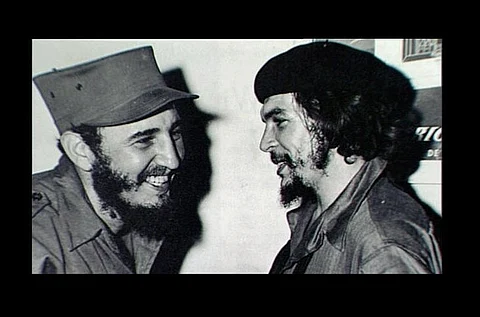

Those were the days, my friend.
When revolution was in the air. When there was social, economic and political upheaval all round.
And those days (or rather years), my friend, were what Fidel Castro meant to me and my generation, when many of us were still in school, but grew up hearing about the Fidel Castro and Ernesto ‘Che’ Guevara. Those days when a portrait I had made of Che was taped to the wall at home.
A journalist friend asked on Facebook, why Che face adorns t-shirts and not that of Castro. The answer, to me, is simple. Che, the one with a youthful look and straggling beard, who had gone on a journey of self realisation on a motorbike, died young. A martyr to the cause of revolution, nevertheless young and dead (rather killed). And everyone loves a martyr, especially a young one, whom one can romanticise about.
But Castro was different, the rugged bear of a man, with whom Che had shared the dream, and who lived to almost achieve that dream.
But this is not about Fidel, his beard, Havana cigar or his Cuba. This is about those years in the 1960s (actually goes back to late 1950s but then I was at that time not even in school).
But the mid and late 1960s for us was an era that the world may not see again, an era when there were iconic figures like Patrice Lumumba leading the fight in Congo, or an Allende bringing about a revolution in Chile (only to be assassinated, just like Lumumba was).
That was the era of Martin Luther King Jr and his non-violent revolution for the rights of the blacks in the United States. That was also the era of the likes Malcolm X, of Cassius Clay who shed his ‘slave name’ and called himself Muhammad Ali. Of Tommie Smith and John Carlos with their Black Power Salute at the medals podium in Mexico Olympics.
That was the era of anti-Vietnam war protests across United States. And for us, then studying in a school in Delhi, a few thousand kilometres away, Cassius Clay’s refusal to be drafted, his conviction and his being stripped off his heavyweight boxing title, were the stories of inspiration.
That was the era of campus unrest across Europe, especially France, when names like that of Tariq Ali burst upon our political consciousness. Incidentally Tariq Ali is probably the only throw back to that era still alive. He was here in Chennai three years ago to deliver the academic year’s inaugural lecture of Asian College of Journalism. And I finally had the opportunity of meeting and interacting with at least one of my school day heroes.
That era started slipping away, as communist regimes crumbled, Berlin wall came down and finally Soviet Union disappeared from the world map.
But Fidel Castro and his Cuba continued to remain the beacon of ideological hope. The brief flicker that was Hugo Chavez is also gone now. As is Castro himself.
And as we see the ominous rise of the right wing in many democracies, one wonders:
Are those days gone forever?